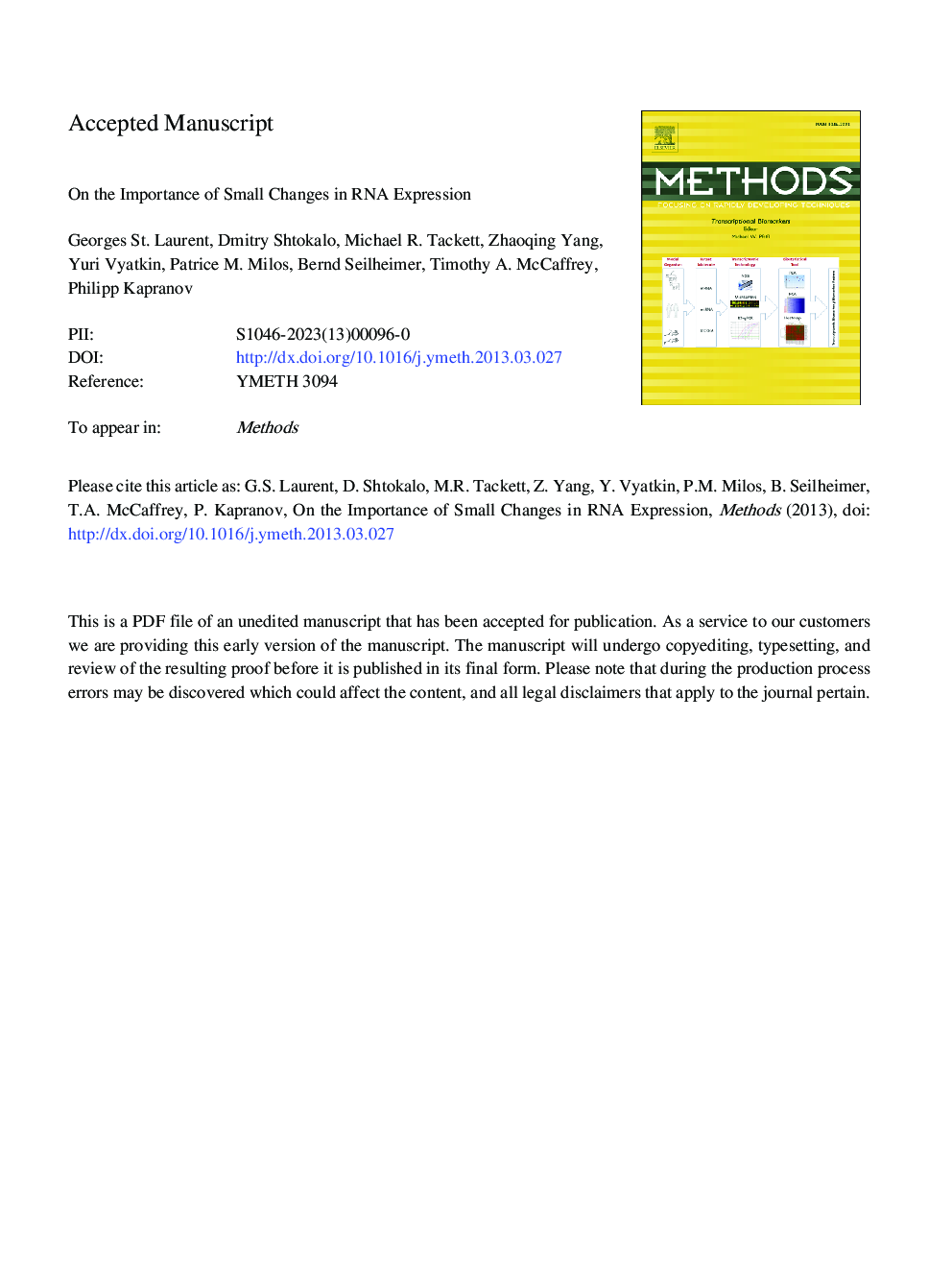| Article ID | Journal | Published Year | Pages | File Type |
|---|---|---|---|---|
| 10825811 | Methods | 2013 | 20 Pages |
Abstract
The analysis of the differential expression of genes has been the key goal of many molecular biology methods for decades and will remain with us for decades to come. It constitutes a fundamental resource at our disposal for determining the relationship between products of transcription, biology and disease. The completed genome sequencing of many common species allowed microarrays and RNA sequencing (RNAseq) to become major tools in Systems Biology. However, we estimate that at least half of all experiments ignore transcripts that change less than some subjectively chosen threshold, typically around 2-3 fold. Here we show that a majority of the informative RNAs and differentially expressed transcripts can exhibit fold changes less than 2. We use highly quantitative single-molecule sequencing of total cellular RNA derived from a time course of inflammatory response, a process critical to a large number of diseases. Furthermore, we show that enrichment of biologically-relevant functions occurs even at very low fold changes in RNA levels. In addition, we show that most of the common statistical methods can reliably detect transcripts with low fold change when as few as 3 biological replicates are sequenced using single-molecule based RNAseq. In conclusion, given the prevalence of expression profiling in current research, the loss of data in half of all expression studies results in a significant, yet needless drain on the discovery process.
Keywords
Related Topics
Life Sciences
Biochemistry, Genetics and Molecular Biology
Biochemistry
Authors
Georges St. Laurent, Dmitry Shtokalo, Michael R. Tackett, Zhaoqing Yang, Yuri Vyatkin, Patrice M. Milos, Bernd Seilheimer, Timothy A. McCaffrey, Philipp Kapranov,
